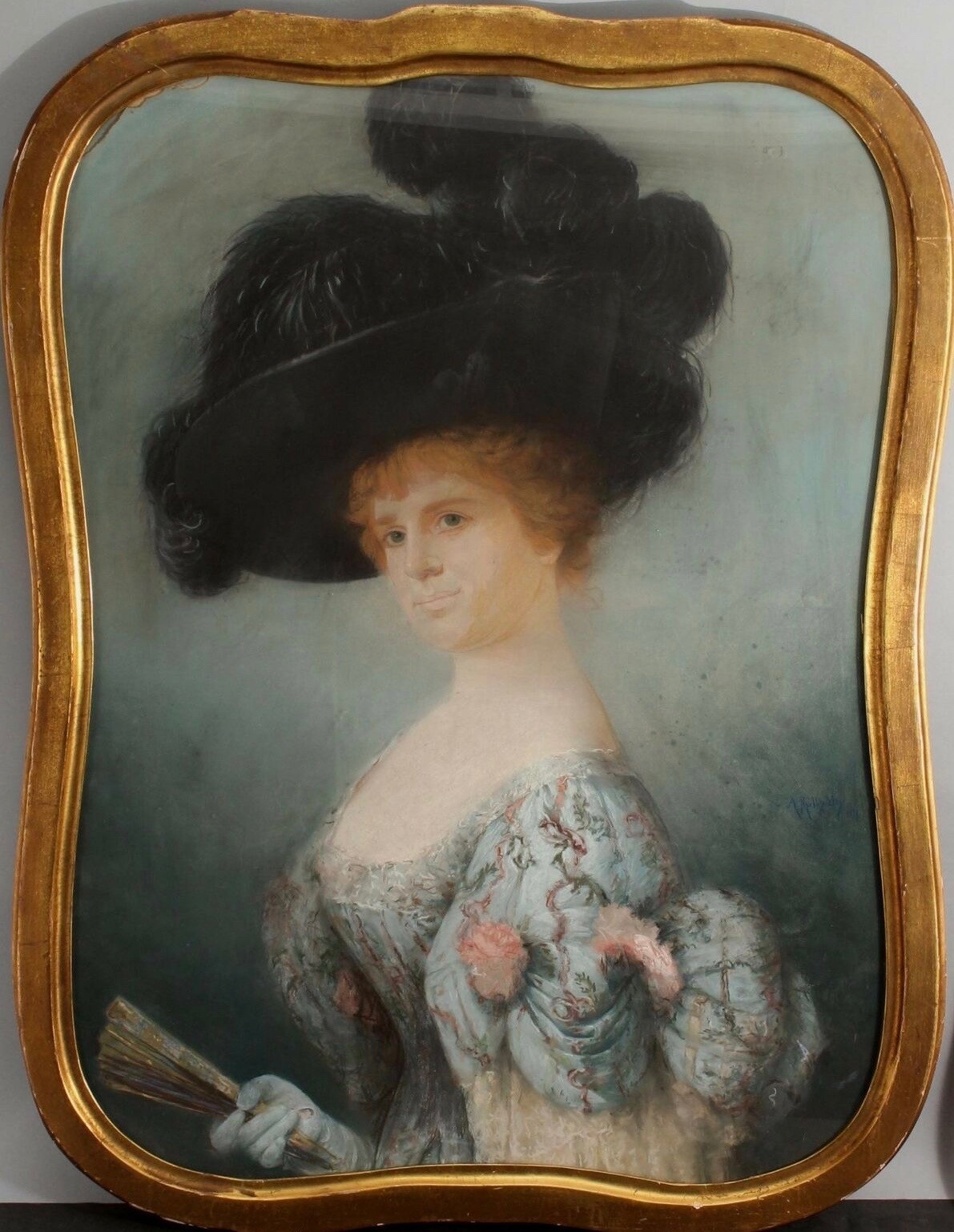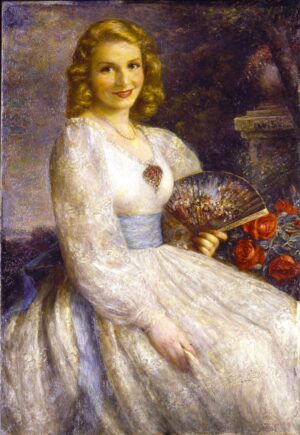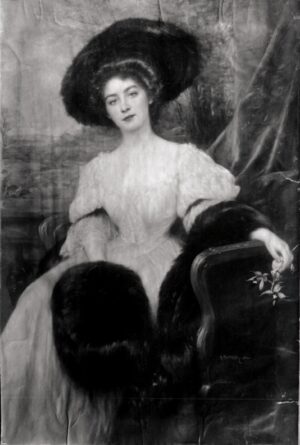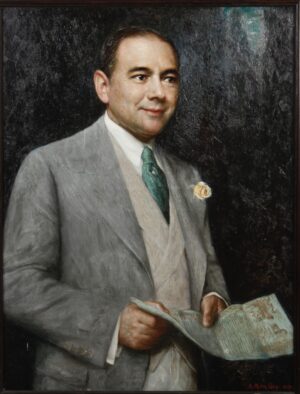The sitter was the daughter of Thomas Moore of Philadelphia, sometime associate of the chemical firm of Powers and Weightman. She was the wife (after 1886) of the Chicago railway magnate (Born Philadelphia June 25, 1837, died December 29, 1905), who helped finance, organise and manage London’s Underground system. He presented a telescope costing about $400,000 to the University of Chicago (Yerkes Observatory, Lake Geneva, Wisconsin). A photograph of the sitter is in the Chicago Historical Society (negative 53,951). Mrs Yerkes was also painted three-quarter length by Benjamin Constant in 1901 (sold Sotheby’s, New York, October 28, 1986). A year after the death of her husband she married Wilson Mizner (1876-1933) playwright, raconteur, entrepreneur and crook (brother of the more famous Addison Mizner, the Florida-based architect) within a month of her husband’s death, but divorced him in May 1907.
The New York Daily News, January 30, 1892, and The Social Truth, Saturday, April 23, 1892, both said that Muller-Ury is about to start a portrait of this sitter, but as the located pastel and the oil portrait (unlocated) are both dated 1891 it must be supposed that the works were executed towards the end of the previous year and the newspapers had only just learned this information.
When Mrs Yerkes died in April 1910, her sister Mrs. Anna Hurlock Sims of Bronxville, NY was the largest beneficiary receiving $100,000 and jewellery, furs, clothes and books, and smaller equal parts to two other sisters Martha Ella Stockton and Eliza Markley Sanderson, brothers, Thomas, William S., George P., and Powers M. Moore, and a ninth portion divided between nephew Rodney Sanderson and niece Claire Adelaide Sanderson.
The pastel apparently shows some differences with the lost oil painting. The pastel shows a slightly fuller figure, fairer hair and a less defined face and complexion; indeed the medium seems to have allowed a less distinct handling of the figure altogether. The dress, however, is beautifully handled in the pastel, but has what looks like two pale pink flowers in the great gathered puff of the sleeve in place of two dark ones in the oil, which even in the old photograph appears sharper and more defined as is expected of oil painting.





